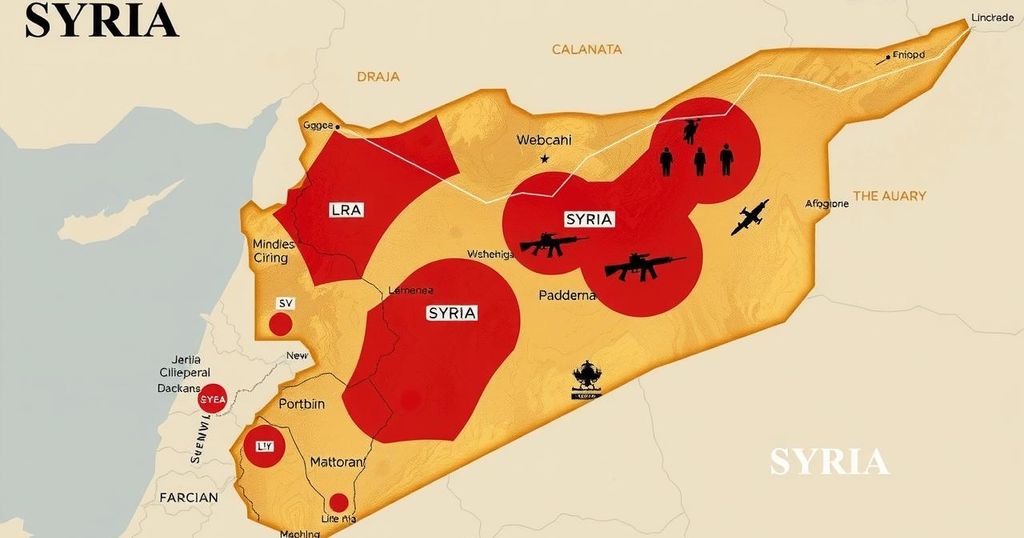Sudden Rebel Gains in Aleppo: Implications for Syria’s Ongoing Conflict

The renewed rebel offensive in Aleppo signals a pivotal moment in Syria’s 13-year civil conflict. With significant implications for regional stability, this fighting illustrates the ongoing struggles between Syrian government forces and various opposition groups, particularly the newly prominent Hayat Tahrir al-Sham. The potential for escalated violence and the involvement of external powers heightens the urgency for international attention and response.
The Syrian civil war, enduring for 13 years, has gained renewed attention due to a rebel offensive targeting Aleppo, a significant urban center. This is noted as the most substantial push by opposition forces in recent years since the Russian intervention that previously retook the city for President Bashar Assad in 2016. The ongoing conflict has considerable implications, as its effects transcend Syria’s borders.
The recent fighting arises amidst a complex regional landscape, where U.S.-backed Israel is already engaged in conflicts with Hamas and Hezbollah—groups aligned with Iran. Robert Ford, the last serving U.S. ambassador to Syria, indicated that prior Israeli strikes against Syrian and Hezbollah targets have contributed to this new opportunity for rebel forces to advance.
The significance of these developments at Aleppo is profound. The long-standing conflict has resulted in around half a million fatalities, alongside a massive exodus of 6.8 million refugees, profoundly impacting Europe’s political dynamics. Approximately 30% of Syria remains outside Assad’s control, fragmented among various opposition factions and foreign forces, including about 900 U.S. troops aimed at preventing an Islamic State resurgence.
Experts assert that if government forces falter in Aleppo, the situation may alter the conflict’s dynamics substantially. Charles Lister, an analyst at the Middle East Institute, emphasized the potential for the conflict to be consequential. Furthermore, if external powers like Russia and Turkey become directly involved, the situation could destabilize further.
Leading the offensive is Hayat Tahrir al-Sham (HTS), designated a terrorist organization by the U.S. and U.N. Its leader, Abu Mohammed al-Golani, initially linked to al-Qaida, has attempted to reposition himself by renouncing such ties and promoting a more moderate image.
Historically, Aleppo has been a critical trade and cultural center in the Middle East, supporting 2.3 million residents prior to the war. After a significant initial rebel occupation, the city was besieged and subsequently surrendered to government forces in 2016, marking a pivotal moment in the conflict. Recent Israeli airstrikes continue to target Hezbollah and Syrian military positions in the area.
The recent rebel advancements in Aleppo signify a crucial turn in the 13-year Syrian civil war, carrying vast implications not only for Syria but for regional stability. The interplay of various international forces and local dynamics underscores the potential for increased violence and instability. The emergence of Hayat Tahrir al-Sham as a key player necessitates close observation, while the history of Aleppo accentuates the strategic significance of control over this vital area. As these developments unfold, the international community must remain vigilant regarding the broader repercussions of this conflict.
Original Source: apnews.com








